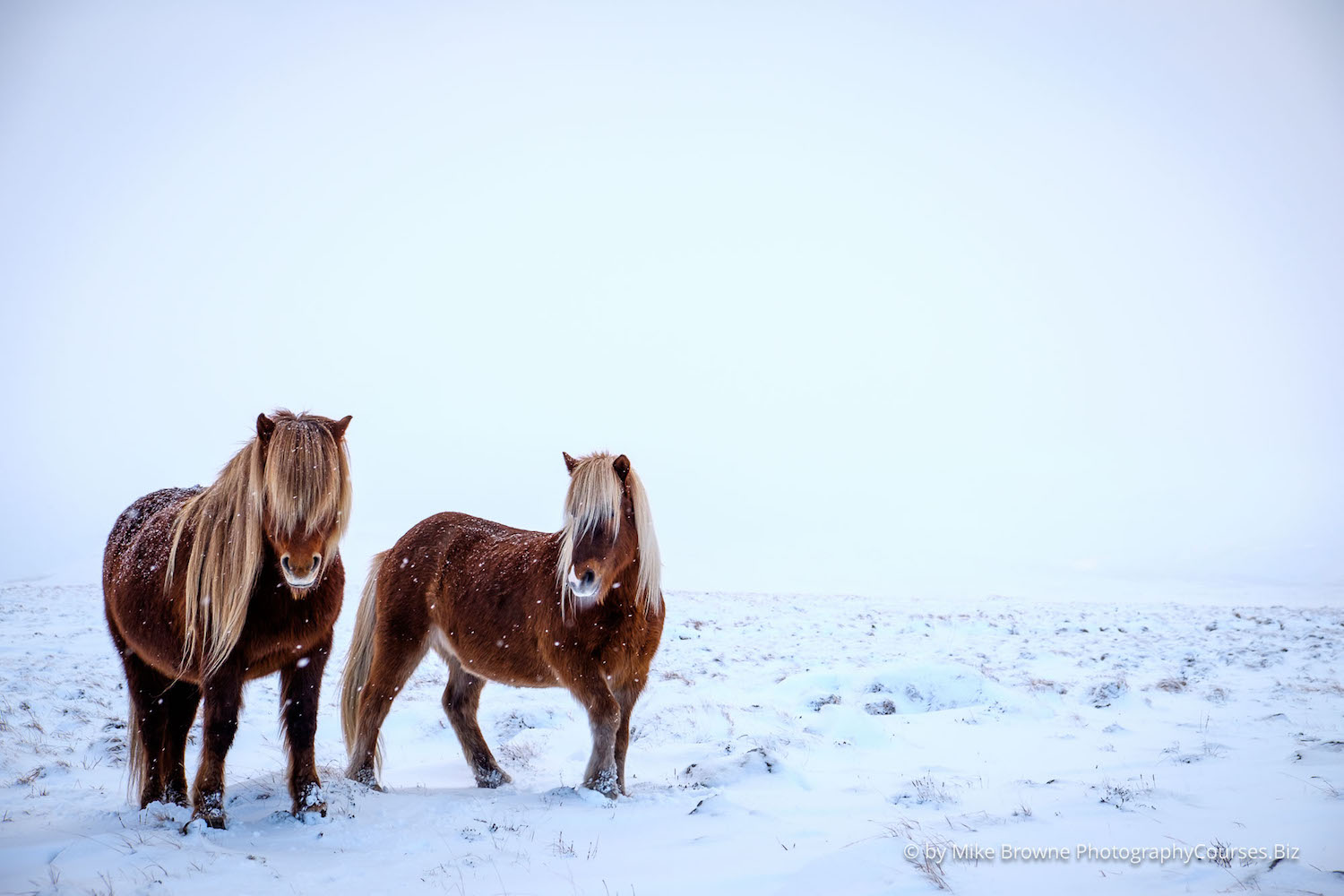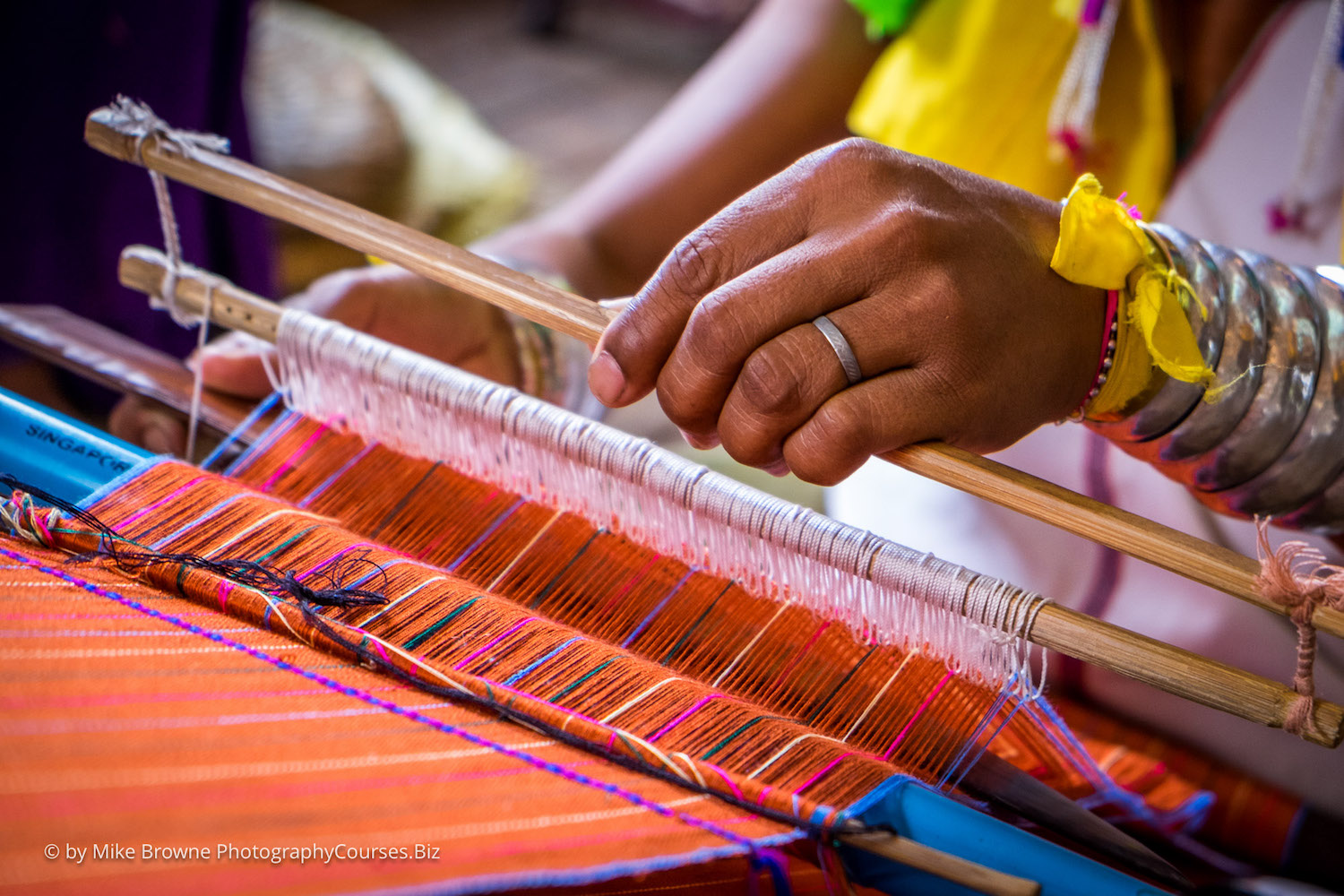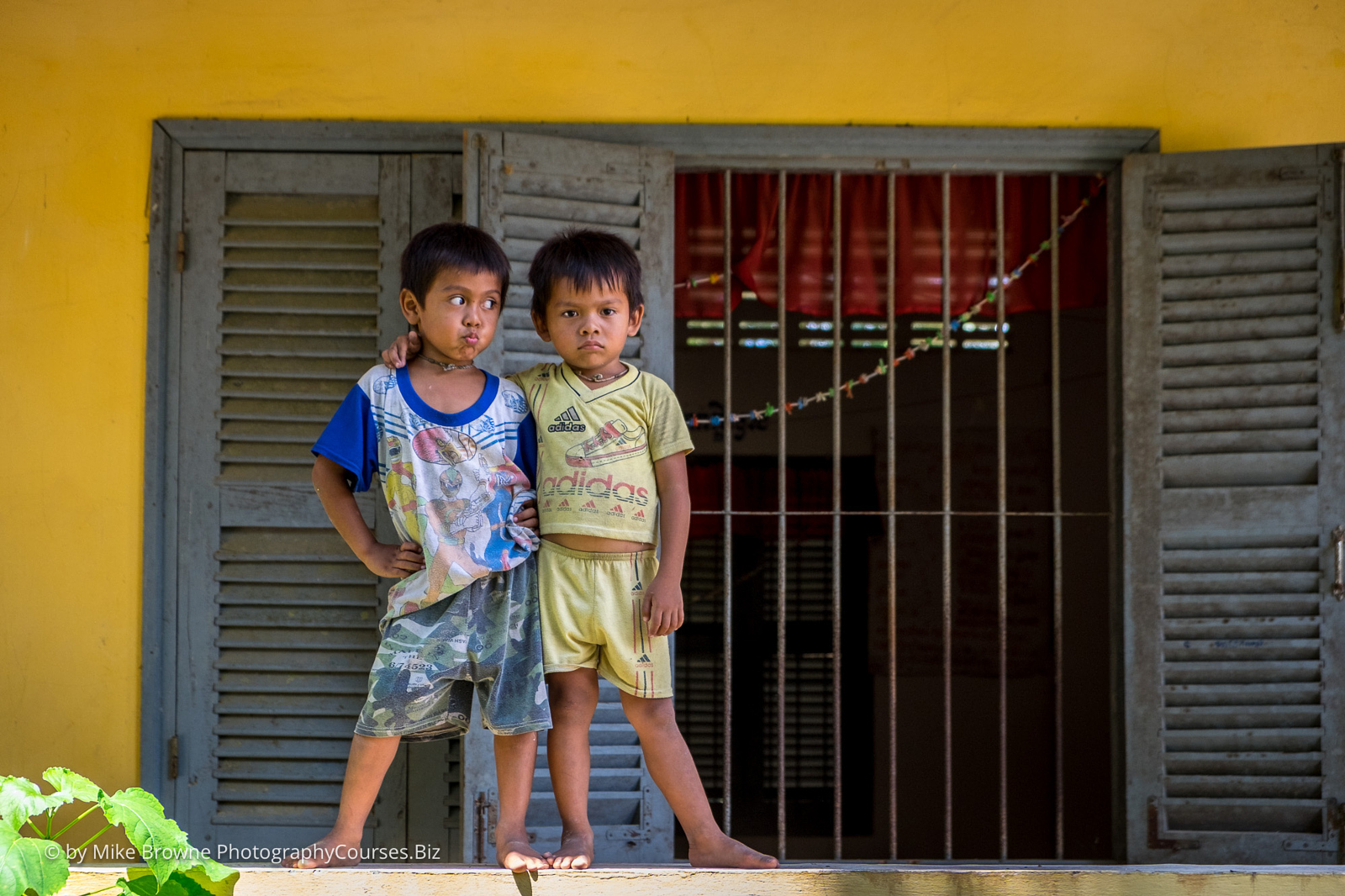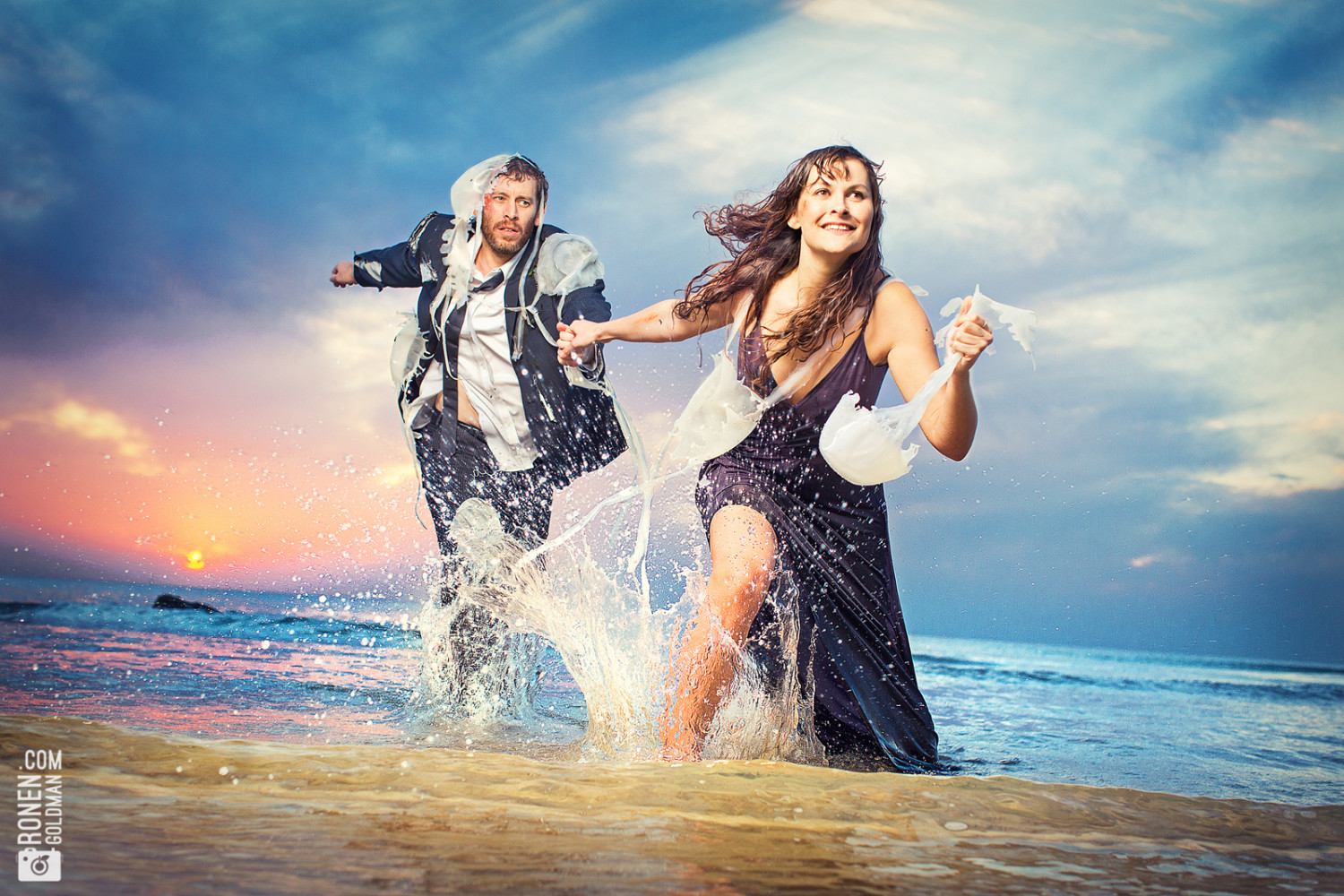Sit down to have a chat with Mike Browne, even for just a few minutes, and you’ll be left wearing a smile and carrying a couple of key impressions.
One: the man is unabashedly charming and genuine, exuding a sort of warmth that has earned him the nickname “UK’s Friendliest Photo Expert,” and many a photographer’s respect.
Two: no matter the topic, no matter how complex or simple, exciting or mundane, Mike brings it to life.
It’s that last one that’s critical, and what he’s built his brand around as a photography educator. When you’re learning a subject that isn’t always exciting, you need a teacher who can be excited for you; someone in your corner pumping you up because organizing your Lightroom catalogs is mind-numbing at best, and the tricky world of photography composition can get confusing fast.
I had the delightful opportunity to speak with Mike recently and ask him a few questions about his work, his photography, and his overall lust for life.
Our conversations in the past have meandered all over the place—literally and figuratively—and this interview was no different. I asked him about everything from his story to his educational material; from the state of the photo industry, to his opinions on smartphones as photographic tools. His story in particular amped me right up, and I think it’ll do the same for you.
So scroll down to find out what he had to say, and then join the conversation in the comments at the bottom!
Hey Mike, so I know who you are, but some of our readers might not. Can you give me a quick website bio introduction? Who are you, what do you do, and how did you end up a photographer?
Quick?! It’s a long story but I’ll be as quick as I can. I’m just an ordinary sort of guy. Addicted to motorbikes, love travelling and being in the sunshine.
Photography had been a hobby which I loved, but wasn’t very good at. This was back around 1990 when I worked driving trucks and excavators. I hated my job and one day it all got to be too much for me and I figured, “I don’t know what I want, but this isn’t it so stop doing it.”
So age 29 I sold everything (and I do mean everything) and went traveling in Australia and Africa for a year. Logical solution right? It was in Africa I found what I wanted to do through a life-changing conversation with a guy whose house I found myself staying in. He asked me what I was going to do with my life when all this adventure travel came to an end.
I didn’t want to think about it because knowing what we want for our lives can be a tough question to answer, but Ken refused to give up. He said, “Everyone has something they dream of doing, something that inspires them but never act on it. Usually because they’re so scared of failure they don’t even admit it to themselves. What is it for you?”
Seeing as this was just talk and idle fantasy I eventually admitted I’d love to be a photographer/writer. “Well go and do it then!” He said. This kinda stopped me in my tracks. How could I do something that big? I was an out-of-work digger driver!
Ken looked at me over a wobbly spoonful of jelly he was about to pop into his mouth. “99% of people think they’re pigeonholed as a shopkeeper, postman, or digger driver, so they never try to fulfill their dreams,” he said. “So just by trying, you have a head start over most of the population of this planet so why not give it a go?”
It was like slap round the face. Could life really be that simple? Ken inspired me to find out. I came back to the UK, found somewhere cheap to live, and spent a year reading ‘How To Be a Photographer’ books, going to night school, and practicing with a camera.
The plan was to become good enough to shoot stock photography, write and illustrate magazine features, and go back on the road traveling again. But over time people started asking me to take pictures for them and bit by bit a business started to grow around me. So I hit the streets with a portfolio of photos under my arm and pestered the hell out of anyone who’d listen.
Hotels, bridal shops, restaurants, factories… You name it and I shot photos of it for the owners. My first proper invoice was in December 1993 to shoot some new black paving at a local airport for the civil engineering company I used to drive excavators for…

What inspired you to become an educator? Many of the photographers who teach seem to do it out of necessity, but you are obviously an educator first.
After about ten years working as a photographer I realized I had strayed from my original plan to shoot stock and see the world, so I started looking for a way to get back on track using the Internet as a platform. With the help of my ex-partner, we wrote an eBook about photography and made a website to sell it. That was the beginning.
One day, someone who’d bought it phoned and asked if she could hire me for a day’s photo training. I was scared shitless! I had no idea how to go about it, but feedback from the eBook was good and I needed the money. She told a friend, and I discovered I love sharing my knowledge… and according to them I was very good at it.
My ex is a very senior TV producer and I had worked with her as a cameraman/editor for a while. So we started making photography training videos for the website and charged a monthly subscription to watch them. And people liked them!
It branched out onto YouTube and all the wonderful, kind comments subscribers left on the videos moved and inspired me. They gave me confidence in my abilities as an educator and I loved knowing the light was going on for people all over the world as they mastered new skills. It’s so fulfilling and a complete privilege for me to know I play a part in that.
And it’s a two way thing. I can help them with what they want and they, in turn, enable me to do something I love. I couldn’t do it without them. How cool is that?
You’ve been taking pictures for… well… about as long as I’ve been alive. In that time, how have you seen photography change? Are you optimistic about the future of the still photo?
The change from film to digital was tough for me. I’m not that ‘techie’ and suddenly the world was full of new jargon, concepts and no one seemed to know how to color manage prints. I was shooting 40+ weddings a year at the time and this was a big problem.
I would have walked away from photography altogether were it not for the help of a great photographer friend of mine, Bella West. She lent me a Fuji S2 to play with and got a color management specialist from Sydney, Australia called Linz Merritt to come to England and do seminars about it. Linz simplified it all and explained the concept of monitor calibration and calibrated workflow. That saved me and now I wouldn’t go back.
I think the future of the still image is very bright. We’re taking more photos now than ever before. Granted a huge percentage of those are with a ‘selfie stick’, but there’s a lot of people out there with a passion for capturing beautiful images. You only have to look at your own site to see the amazing images coming in all the time.
And you don’t have to be a professional to do it. In fact being a ‘pro’ can be limiting because you don’t get to shoot what you want, you shoot what your client wants. There are some stunning amateur photographers out there whose creativity isn’t limited by this, and we still want beautiful images on our walls, which is where they should be instead of mouldering away on a hard drive.
How do you feel about mobile photography and the explosion of the smartphone as the “always on you” camera? What disadvantages are there to starting on a smartphone? Advantages?
I don’t have a problem with phoneography. Cameras don’t take pictures—people take pictures. To my mind, it’s the photographer’s creativity and understanding of light and composition that’s important.
Sure phones are limited in what they can do, but work within a phone camera’s limitations and you can shoot great images. There’s a gallery of images taken with my old iPhone 4 on our Facebook page to remind photographers it’s them who take the photo, not the camera.
Now I’m not saying a DSLR is not good. The ability to change lenses, ISOs, exposures, depth of field, etc. opens up a world of creative possibilities once you know how to use them. Plus the image quality is stunning, even from a cheap DSLR.
Who do you consider your main audience as an educator? And what’s one piece of crucial advice that they have a particularly hard time following?
Historically it was beginners, then intermediate level photographers, and now we’re seeing a growing number of seriously advanced, excellent photographers… especially on my travel photography workshops.
There’s a massive amount of gadgets put on cameras now, which I believe to be dreamed up by marketing people to push sales. “Our camera has this new doo-dad and you need it!” But with film cameras we only had two exposure controls, shutter and aperture. You had to pull the film out to change ISO!
It may seem strange, but I think entry level cameras are more confusing than professional ones. All that tech that’s supposed to do it for you cannot think. It doesn’t know how bright or dark you want the image to be. It doesn’t know how you want the image to look when it develops the RAW file for you.
I’ve found the hardest thing for them to grasp is that they have to think like a photographer and take responsibility for their image making themselves.
The other is the quality of light and the impact it has on an image. I don’t think there is ‘good’ or ‘bad’ light. There’s just light. The qualities of hard direct light like sunshine will work for some subjects and not others. It’s the same for flat dull grey looking light. It works for some things and not others. I could go on about this for hours…
Do you have a favorite lesson or guide or video you’ve put together?
Yes, I’m really proud of my 7 Building Blocks of Photography. From the feedback I get it’s making a big difference. It teaches people how to think their way through an image, how to assemble the technical and creative aspects of photography together one at a time to get the image they want. Again it’s about the photographer taking the picture, not the camera.
Many quite technically advanced photographers think an image comes from the camera. I believe it comes from seeing something that interests us, how we imagine the image to look and then we have to get that out of our heads and set up the camera in such a way as to fulfill what we want.
Our cameras need us to take inspiring pictures. I once watched a guy jump out of his car next to a pretty little lake clutching a Hasselblad. And that’s a lot of very expensive camera! He leant over the gate, snapped a shot and drove off. Had he spent ten minutes walking around first he’d have found an old stone wall going down into the water, tufts of grass for foreground, a line of trees coming in from the side and pretty little ringlets of raindrops on the surface of the lake.
His Hasselblad couldn’t find that for him, compose the scene harmoniously, wait for the light to change. OK, maybe he didn’t want to get his very expensive camera wet. But surely someone who can afford a Hassy can carry an umbrella with them when out shooting on a rainy day. This is thinking like a photographer, instead of just taking a picture. I bet he was disappointed when he got home.
I know you try to incorporate some level of social responsibility into your training. How does that work?
At present, social responsibility projects are directly linked only to the workshops in Asia I run with Simon Taplin. When we’re all shooting in rural villages the people are completely lovely. Often sharing what little they have with us and asking nothing in return. Despite living in what we would consider absolute poverty, they welcome us, show us around and are delighted to be photographed.
We believe it’s only fair to put something back that’ll improve their lives in some way. And I think it gives the workshops a ‘feel good’ factor for the participants as well. So we put aside 20% of profits and work with others who do likewise wherever possible.
The Myanmar workshop bought solar panels and lights for a village school so children can study after dark when they’ve completed their other responsibilities, such as looking after animals etc. In Cambodia, an ex street boy we know won a scholarship to film school, but didn’t have money to get to Phnom Penh to do it. Just by coming on the workshop, our clients changed his life.
Whilst at a film festival there, he was given the opportunity to work on Angelina Jolie’s new movie ‘First They Killed My Father’ assisting Robert Richardson, Director of Production. It is hugely inspirational, not only for him, but for other kids at the home to see one of their own posting photos of himself with Angelina Jolie-Pitt. It gives them something no money on Earth can buy; confidence and a sense of self worth.
Okay, on to you as a photographer. Tell me about your favorite personal photo project.
Hmmm. So many. They’re all my favorite at the time and as photographers, they have to be or we aren’t inspired enough to do them justice. My buddy and partner on the workshops we run in Asia, Simon Taplin and I were talking about this last October whilst scouting new workshop locations in Vietnam. You have to find a way to get what used to be called ‘The Muses’ to come upon you. To become self inspired and completely present to the shoot you’re doing.
One of my favorites was documenting the changes taking place in Romania ten years after the revolution. There was a lot of bad press about Romania at the time and I was asked by a small local charity if I’d photograph some of the good stuff happening in the country, as it struggled to grasp a new way of doing things after the collapse of the communist system.
I met and photographed some truly inspiring people from homeless street kids to the head of child protection in Arad. What began as a charity calendar to raise funds and local awareness grew into an exhibition, eventually hosted by the Romanian Ambassador in London.

What about your favorite commercial shoot?
That was last year for Jet Aviation in Basel, Switzerland. Jet design and build luxury private jets and were embarking on a Boeing 787 Dreamliner conversion. Dreamliners are made from carbon fibre so there’s no metal skeleton to attach a new interior to. The industry in general said it couldn’t be done, but Jet had found a way so this was the first of its kind worldwide.
The brief was for an eye catching, dramatic colorful image that turned heads for use on billboards at trade shows and in magazines etc. There was only one opportunity to shoot it and when they contacted me they didn’t know for sure when it would be.
I actually said no at first. I’m lucky enough to be so busy with the training and consultancy work which I find so fulfilling, I can pick and choose shoots. My criteria for a shoot is it has to be fun and interesting and this one sounded like a big headache. Jet Aviation had a lot riding on this including their global reputation and I am truly delighted they trusted me with it.
But what if it was crappy weather on the day of the shoot? There was a one day window and no possibility of a second chance. The image had to be with their design agency in New York the following morning. This was way too stress-y for my liking!
I’ve worked with Jet Aviation before and I love it because in my experience, they are fun to work with and there’s lots of laughs. We discussed the weather scenario and all the things which could go wrong. They listened and accepted there was no way the image they wanted could come out of a dull wet day with dull flat light. But they still trusted me with it, so I agreed to do it!
The image I had in my head was with the sun behind the aircraft, just clipping the top of the fuselage. A bright blue sky and their signage prominent on the hanger. So what did we get on the day? Grey, featureless sky and drizzly damp!
Jet’s head of communication Marie and I spent all day sheltering from the weather. Now and then we’d pop out from beneath the Dreamliner (which makes a great shelter) to shoot a few more lifeless pics. Come the evening, we called it a day and sadly agreed we’d done all that could be done. So we went to a restaurant for dinner.
As the food arrived, Marie noticed a tiny hint of sunset in the sky. We went outside to check it out. Sadly it was fading fast. But, there was detail in the clouds now, and a bit of that magical dark blue between sunset and full dark was appearing. It was worth a punt!
Shrieking like a couple of children, we rushed to her car and drove flat out to the airport. As we unlocked the hanger and turned on the lights it rained for a couple of minutes which was a complete blessing. It made the tarmac wet and and handed us the gift of reflections! As the last of that glorious blue of ‘magic hour’ faded I got of three, one minute exposures to blur the clouds movement in the sky and we nailed it!
It’s certainly the most fulfilling and exciting commercial shoot I’ve ever done.
What do you think separates a good photo from a great one? And how do pros manage to consistently (at least it seems so) create great photos while the rest of us struggle to capture “keepers.”
Ha ha. I think ‘good photo’ and ‘great photo’ are personal choice. Beauty lives in the eye of the beholder. I know many of my own personal favorite images on 500px get a handful of likes, whilst others I nearly didn’t post because they don’t excite me that much, get loads!
Though there are one or two things that can lead in the direction of ‘greatness’. Light and composition are the big ones. You can have the most beautiful expression of wonder on the most stunning model’s face or majestic landscape, but if the light doesn’t work for it, it’ll be mediocre at best.
As for the ‘pros’ turning out great images consistently. They don’t. OK we have the advantage of experience because we do photography all day every day so the rate is going to be higher. But we all have to experiment, try things that don’t work before we find the ones that do. And don’t forget, we only show our best work! You haven’t seen the crappy dull shots I took of the aircraft!
I believe the difference is persistence and going beyond what might be considered reasonable. It would have been reasonable not to chance it and go back to the airport. But when we take risks and give it 120%, luck often plays it’s hand and helps us out!
How do you stay inspired?
I believe it’s vital to be in a state of inspiration for anyone to do their best work—whatever that may be. And it doesn’t matter much what the source of that inspiration is. It’s getting infected by it that’s important. We all have bad days, days when we can’t get going, never mind get motivated! The important thing is not to wallow in that; to find a way to get up and buzzing.
Sometimes I look at the work of photographers who inspire me. Sabastiao Salgado being my number one go-to guy. YouTube is packed with inspiring videos. And I don’t just mean photography videos. Tony Robbins is a favorite of mine. How can anyone not be inspired listening to him for 10 minutes?
Comments and thank you messages from my wonderful students and subscribers are probably my biggest source of inspiration. Some of the stories people have shared are astonishing. One guy is a Zimbabwean refugee now living in Canada. He witnessed his family being slaughtered, had all his belongings stolen when he got to Canada, walked 500 miles to find a job in a different city because he had no money or transport. Even now I believe he’s still homeless.
But, using a cheap compact camera, he began documenting life and events around him. Through his own persistence he started getting them published (and paid for) by national magazines and newspapers. He never gives up, no matter what—and that inspires the hell out of me.
If you HAD to, could you pick a favorite photo from your portfolio?
No! My favorite changes daily. I read someone somewhere once said, their favorite photo is the one they’ll take tomorrow.
Finally, any parting words for the 500px community? And where can they go to find out more about you and your work?
Yes: well done everyone. There are some truly stunning images on 500px from professionals and amateurs alike. If you’re a new photographer it’s easy to get overawed by the quality of photography we see here and in other places. But remember, every awesome photographer who ever lived was once a beginner who didn’t know how to do it.
They persevered and practiced and got it ‘wrong’ so many times they lost count. But in the end those images they craved started to appear and now they are inspiring everyone else to do likewise.
To the accomplished photographers, the ‘Inspirers’ I’d say remember to never stop learning and growing and pushing yourself. You’ll become even more fulfilled as a photographer and inspire others to achieve as you have.
To find out more about me, what I do, and how I can help, please pop by my website at www.photographycourses.biz

A huge thanks is due to Mike, who never got upset with me no matter how many times I missed a self-imposed “I’ll get you the questions by” deadline, and remained willing to do this interview to the very end.
If you have more questions for him, drop them in the comments; we’ll make sure he sees them. And definitely check out his website and YouTube channel. You’d be hard-pressed to find a friendlier or easier to follow photography resource online.


















Leave a reply